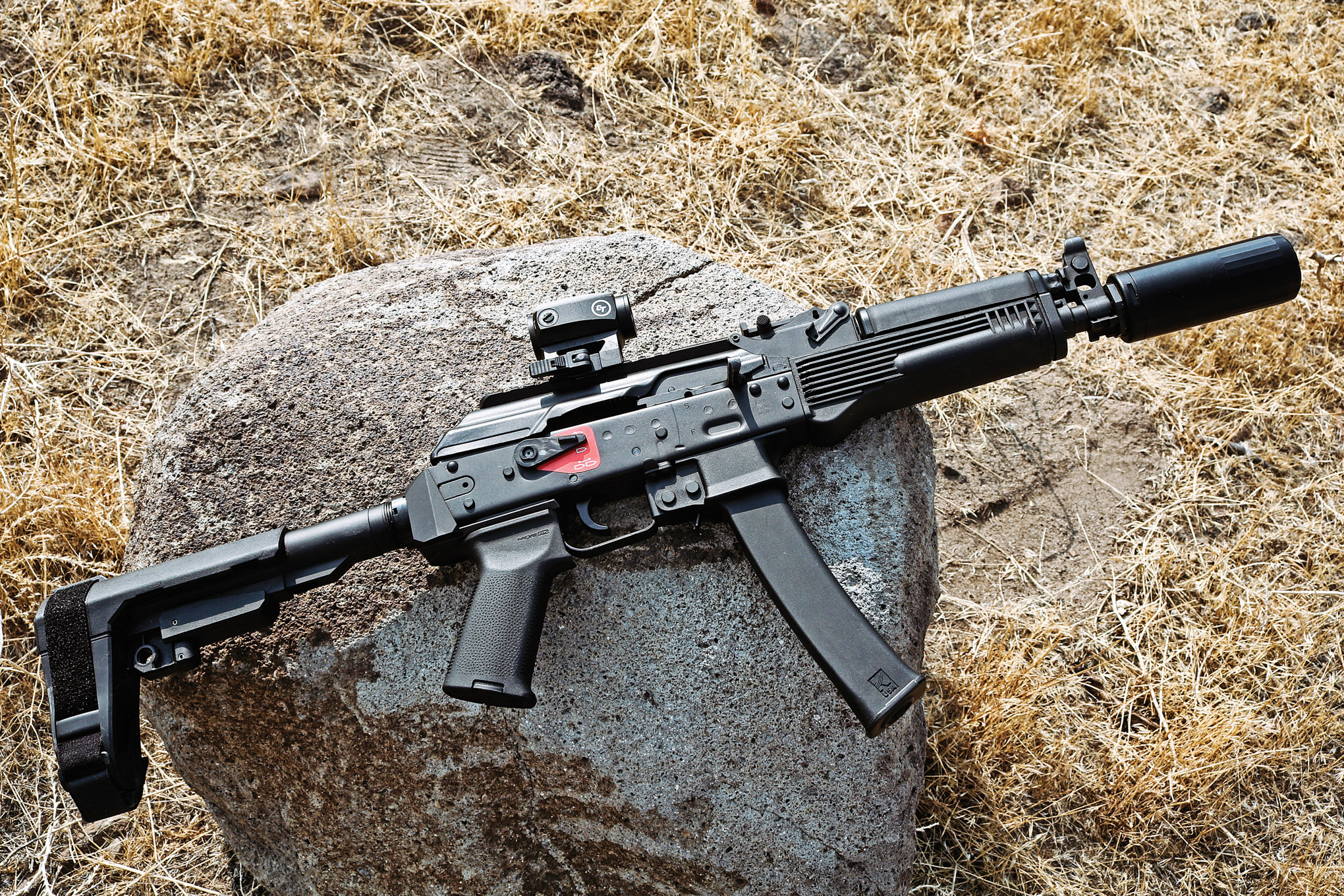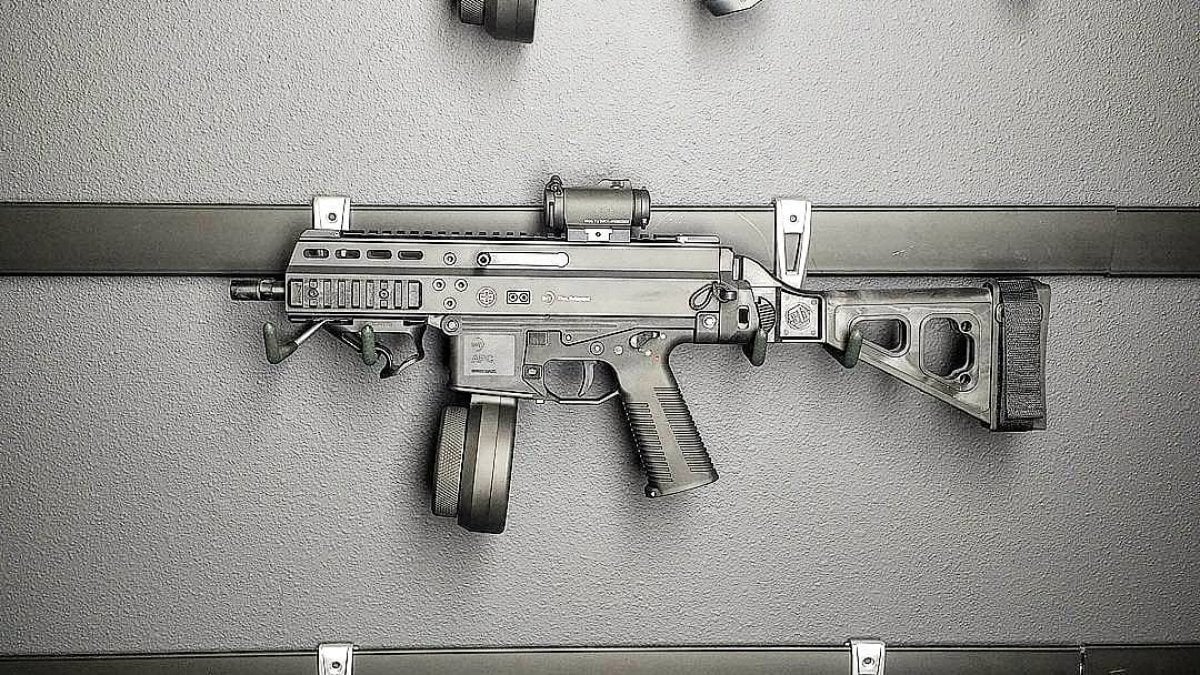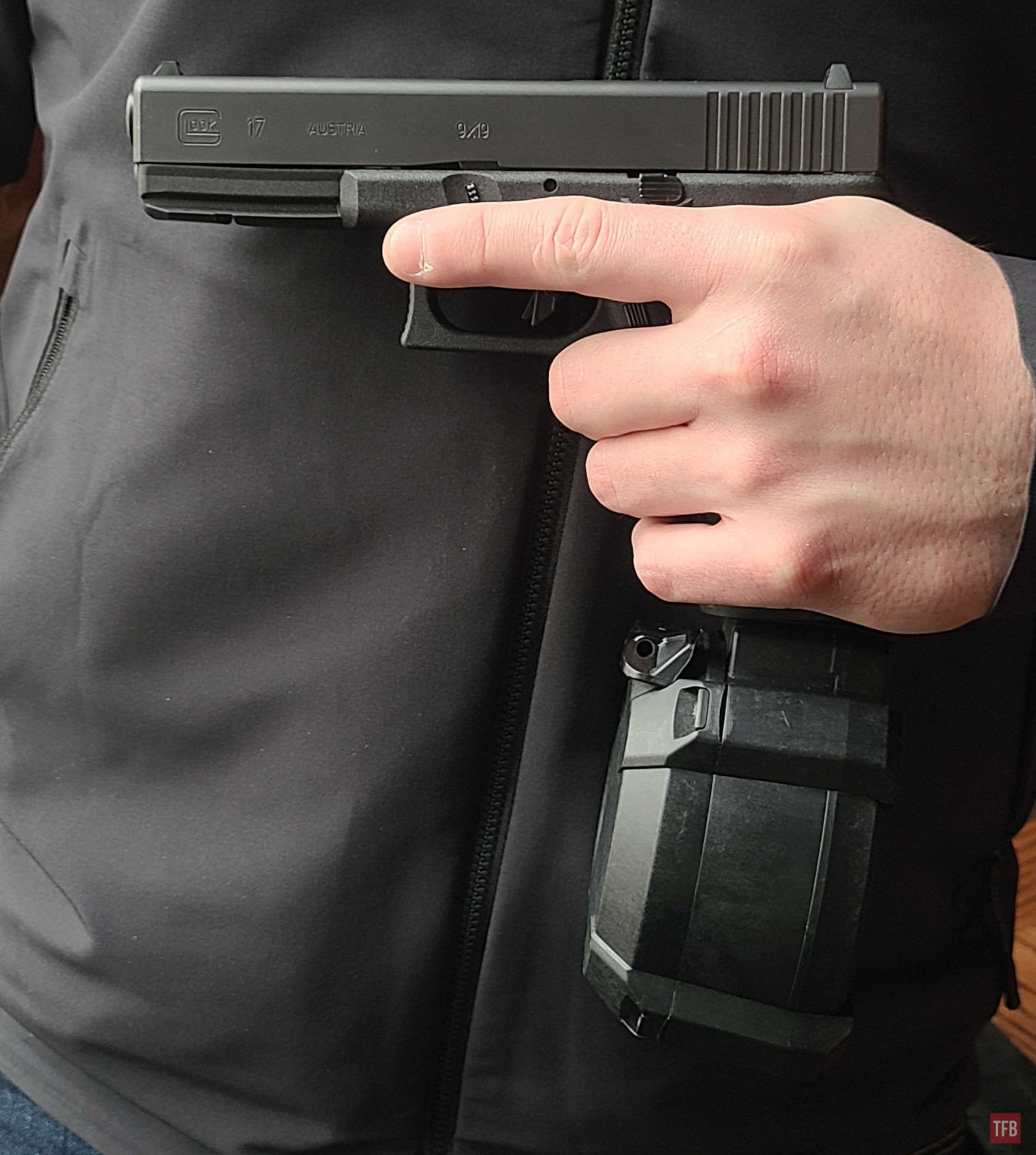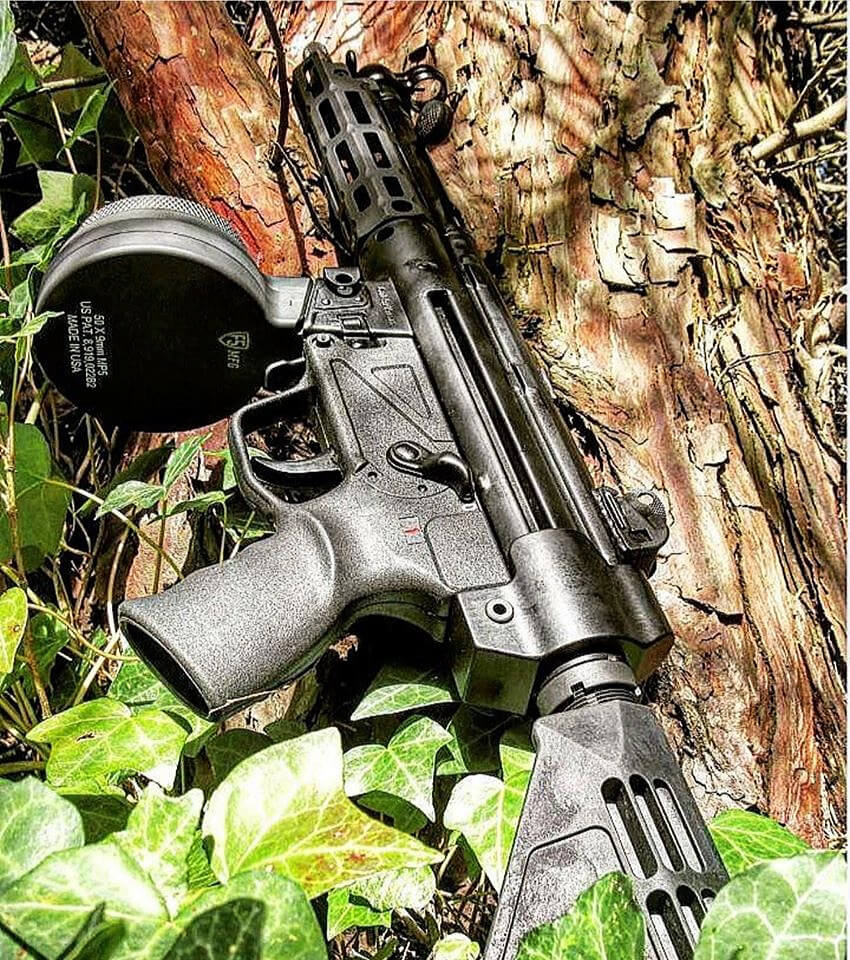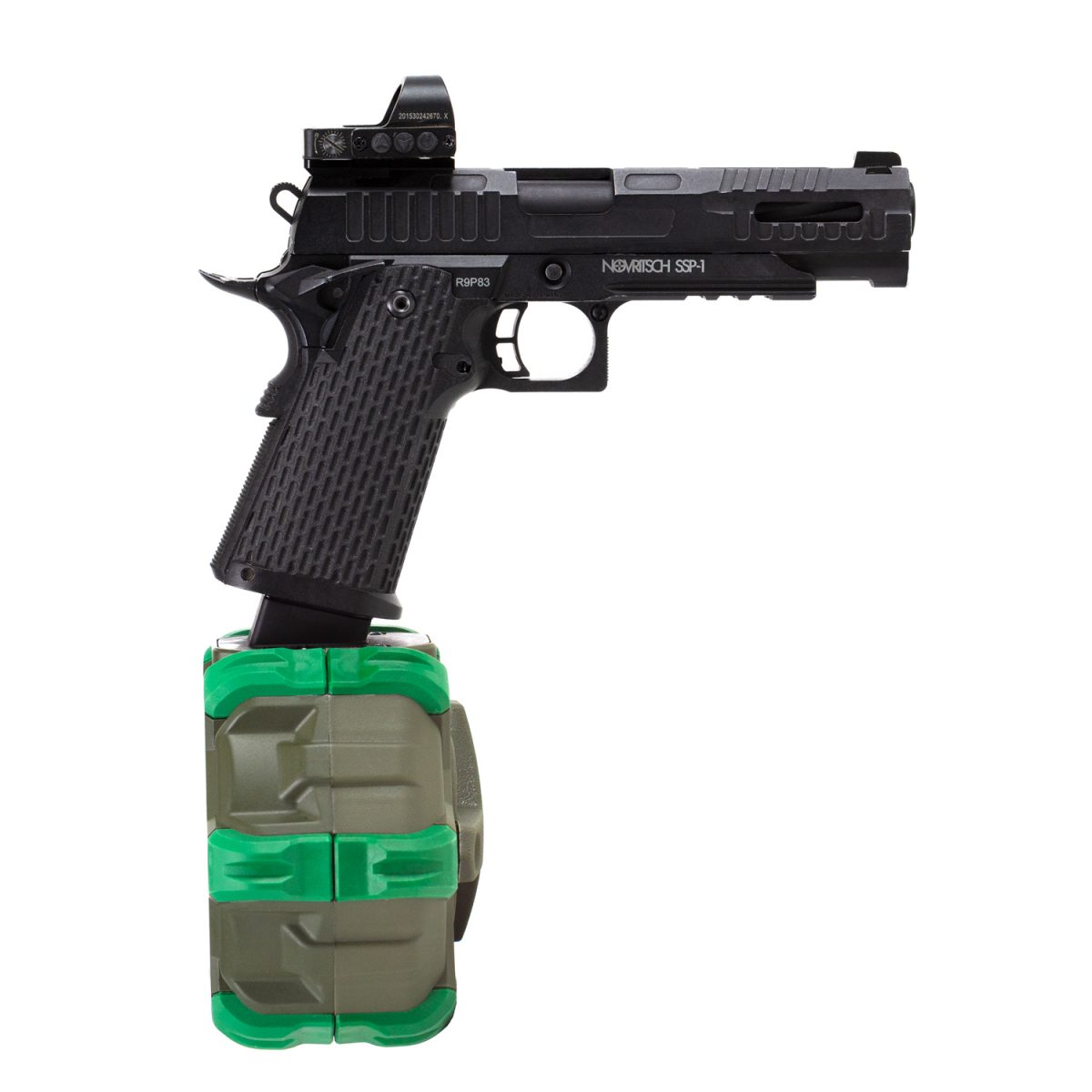Glock Drop Safety - The system provides consistent relaxation from the first to the last round. The three independently operated automatic mechanical safeties are integrated into the gun's fire control system.
This safe, simple and fast system allows the user to fully concentrate on shooting without having to take additional steps to remove and reinstall the safety. This means it is drop safe and also works in temperatures from -40° to 122° Fahrenheit.
Glock Drop Safety

The system is a fully automatic safety system with three passive, active and independent mechanical safeties. The three safeties sequentially disengage when the trigger is pulled and automatically re-engage when the trigger is released.
Glock Replacement Barrel
The trigger safety is the first safety in the firing sequence. It is included in the trigger in the form of a lever and when engaged it prevents the trigger from moving back. When firing the pistol, the trigger safety and the trigger itself mt are deliberately pressed at the same time. If the trigger safety is not pressed, the trigger does not recoil and allows the gun to fire.
The trigger safety is designed to prevent the gun from firing if it is dropped or the trigger is subjected to pressure other than a direct firing pull.
The second safety, the firing pin safety, prevents the firing pin from advancing in the ready-to-fire state. When the sear is pulled back, the sear bar raises the firing pin safety and releases the firing pin port. If you decide not to burn and release the trigger, the safety pin will engage again.
The final safety consists of a trigger bar, which rests on the safety mechanism inside the trigger mechanism. The trigger bar engages the rear portion of the firing pin and prevents the firing pin from advancing. When the trigger is pulled back, the trigger bar lowers the safety mechanism and allows the firing pin to be released. After firing, the trigger bar rises and reengages the firing pin. When the trigger is released, all the safeties re-engage.
On Glock Safeties
The special SAFE ACTION® system allows the trigger to adjust with minimal forward movement of the lever, so you don't have to release the trigger completely to fire a controlled second shot or when you want fire several shots. soon. Once the cartridge is fired, you must release the trigger until it resets, which you can hear and feel. Whether you're buying a new gun or owning one, the first thing you want to know . this is how each weapon works on the weapon you are holding. We've covered everyone you might come across, so you know how to use them before you touch them.
The most important part of handling a firearm is understanding how all the manual safety features work. Your handgun will always have one or more of the following protections:
Security is excellent on most firearms. The lever safety acts as a simple external "switch" of the finger that prevents the firing pin or sear from moving or, in some cases, both. On this 1911, the thumb safety is present to the left of the hammer. The hammer must be cocked to maintain safety on most single action rifles. On double-action and single-shot pistols, the thumb safety can be engaged at any time.
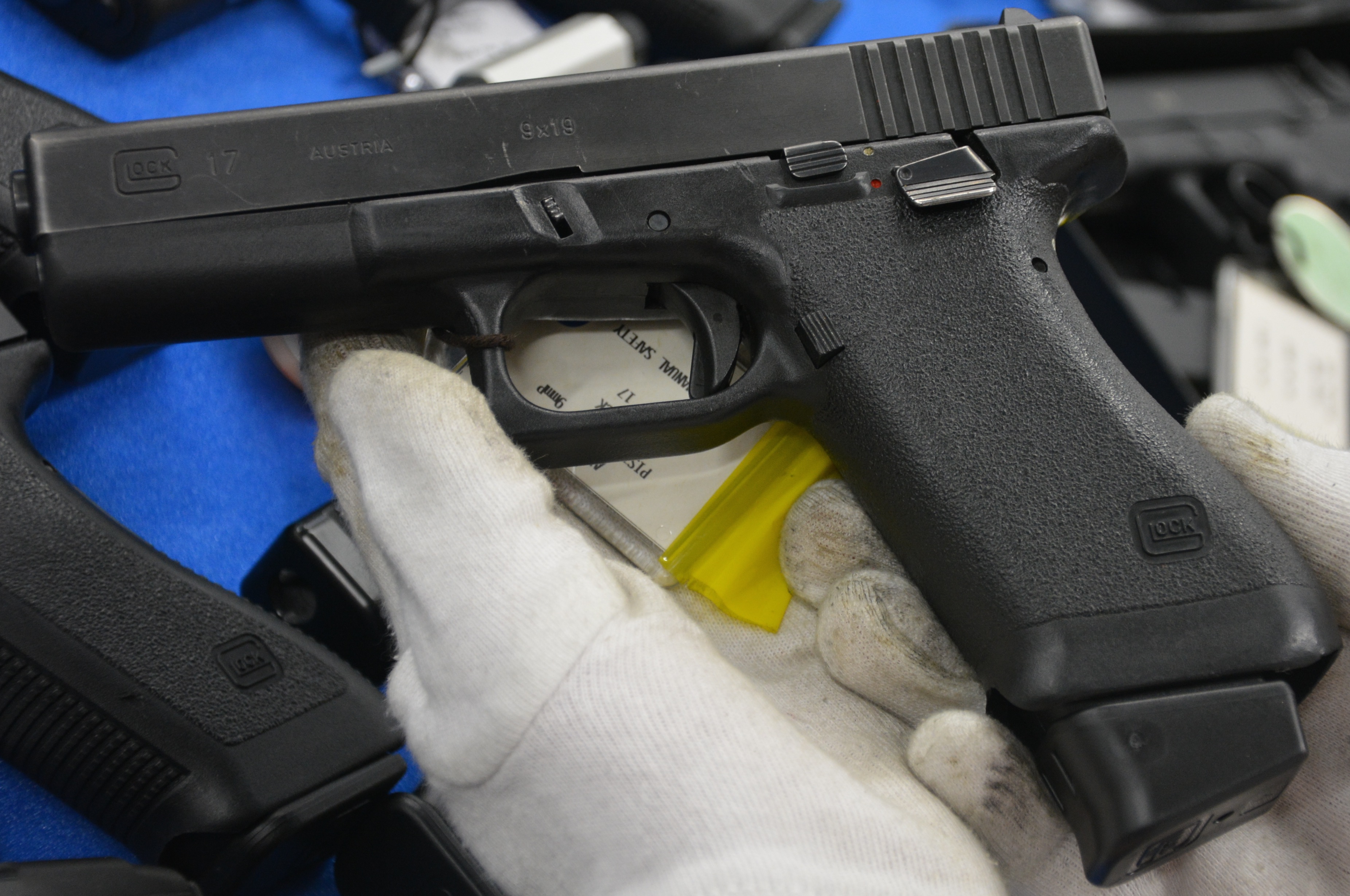
Grip safety always occurs when the handgun is not held in the hand. It releases when the shooter holds the weapon and presses the safety catch with the palm. A safety catch prevents accidental pistol discharge by preventing the trigger from depressing unless the pistol is properly grasped by the shooter, even if the trigger is closed.
Timney Glock Alpha Competition Trigger
Keep an active safety such as a grip safety. They are engaged when the trigger finger is not actively pressing the safety lever. Like the grip safety, this safety is intended to prevent accidental discharge when the pistol is not held in the hand. Should any part of the device slip on the holster, belt loop, or cloth, the risk of the gun being fired is greatly reduced. For the trigger to release the firing pin or hammer, the safety must be fully depressed into the firing pin.
You may have seen a few action movies where a shooter pulls out his gun with the hammer exposed by holding it with his finger and pressing it down slowly. It's dangerous and violates one of the four rules of gun safety: Keep your finger on the trigger unless ready to shoot. Decocking levers replace this dangerous action with a mechanical means of lowering the hammer without releasing the chamber circle. This eliminates the risk of the hammer slipping off the finger and hitting the firing pin, and causing an accidental discharge.
On this Sig Sauer P226, the decocker is located above the magazine release button, circled in white. Handguns with this safety feature typically have three buttons on the slide: one for the slide lock, one for the thumb safety, and one for the decocker. If your handgun does not have a decocker, remove the magazine and slide from the rack to remove all cartridges from the chamber. This is when you have to release the weapon manually by pressing the trigger while hammering your finger.
Although it is not a safety device designed to be used when carrying or firing your firearm, the slide lock makes the firearm ineffective and dangerous to handle. The bolt is a button or lever, usually placed above the sear, which the bolt slides back, releasing the chamber and its contents. The slide bolts are automatically engaged when the last shot is fired and the magazine is loaded empty.
Drop Down Gun Safe
The internal safety is self-engaging and is released by pulling the trigger and does not need to be manually engaged or disengaged. The GLOCK series of handguns are popular for a variety of internal safeties, eliminating the need for external safeties except for the trigger safety.
Some states, such as California, require drop protection on all new firearms. A drop guard covers the shot path inside the receiver or frame to prevent a bullet in the chamber from accidentally exploding if the weapon is dropped to the ground and the shot path is accidentally blocked. Safety drops are usually built into the back of the slide, near the firing pin or hammer, where the handgun typically lands due to the center of gravity.
The firing pin protection is the type of fall protection. It prevents the pin from touching the primer on the chamber circle unless the trigger is pulled. In the event of a fall or mechanical breakdown, the firing pin will not be able to strike the primer of the chambered cartridge. It will be covered with a bar or plate. This body block can only be moved by the trigger pressed by the shooter.

The hammer block functions as a firing pin safety: it uses a bar or body plate to prevent the hammer from striking the firing pin unless the trigger is pulled. Should the hammer accidentally drop - perhaps because the weapon is dropped or due to a failure to find the mechanism - the hammer block will prevent hitting the firing pin head if the firing pin is not stressed enough to To take it out. block at that time.
Zev Technologies Pro Drop In Trigger Kit Curved Face Glock 17 19 26 34
The transfer bar works the opposite of the hammer block: when the trigger is pulled, it moves a small bar with the face of the strike in front of the firing pin head. The hammer should strike this face instead of the striker directly. The bar transfers the force of the hammer to the top of the firing pin, tearing the primer around the chamber. If the trigger is not pulled and the hammer drops, the transfer bar will not seat. The hammer will then strike the frame or slide of the weapon, completely preventing the firing pin.
The magazine disconnects the trigger by locking the trigger so that it is not pulled when the magazine is removed from the hand. This is to prevent accidental discharge of a cartridge left in the chamber after magazine removal. It is a controversial type of automatic "safety" that many gun owners consider a drawback. This decocking of the weapon is not necessary if the person holding the weapon follows the basic rules of gun safety: never pull the trigger unless you are ready to shoot and always handle each weapon like it was loaded.
California requires new firearms to have detachable magazines. Some gun manufacturers and politicians argue that a gun owner may assume their gun is empty if the magazine is removed and they can fire with a cartridge still in the chamber. This idea also violates basic gun safety laws and hinders gun owners' duty to protect themselves. We believe gun owners should learn how to handle guns safely.
The LCI indicates if a bullet is in the chamber, helping the shooter identify which weapon needs to be unloaded before it engages. These panels are usually built on the side
Zev Fuladjdrp9br Fulcrum Adjustable Trigger Drop In Kit With Red Safety Compatible With Glock 7, 17c, 17l, 19, 19c, 26, 34 Gen 1 3 Curved
Glock safety lock, drop side crib safety, glock drop holster, drop safety, stop the drop safety, drop leg holster glock, trigger safety glock, covergrip safety drop cloth, glock 42 safety, drop saw safety, glock 17 drop leg holster, safety glock
